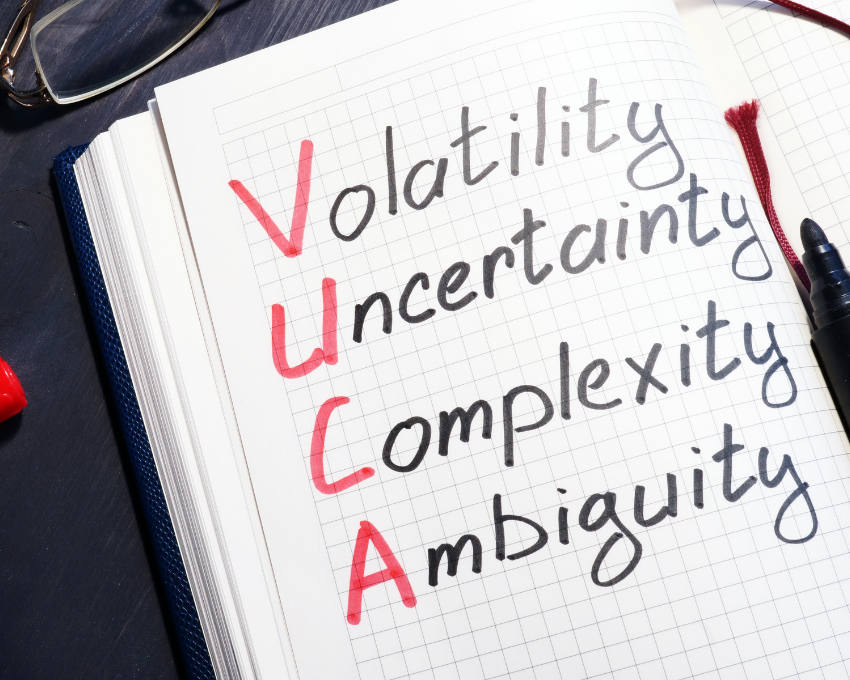A unique requirement for 21st century leaders: The ability to lead through more complexity and ambiguity

Over the last decade, the acronym VUCA has found its way into the business lexicon, taken root in emerging ideas in strategic leadership that apply in a wide range of organisations. Having a deeper meaning of each element of VUCA will help you as a leader enhance your ability to plan and execute business and people strategies within the environment that we operate today.
VUCA was first used in 1987, drawing on the leadership theories of Warren Bennis and Burt Nanus, to describe or to reflect on the volatility, uncertainty, complexity, and ambiguity of general conditions and situations.
VUCA is defined by Josh Bersin as having the following characteristics:
• Volatility: The challenge is unexpected or unstable and may be of unknown duration, but it is not necessarily hard to understand; knowledge about it is often available
• Uncertainty: Despite a lack of other information, the event’s basic cause and effect are known. Change is possible but not a given
• Complexity: The situation has many interconnected parts and variable. Some information is available or can be predicted but the volume or nature of it can be overwhelming to process
• Ambiguity: Casual relationships are completely unclear. No precedents exist: you face the “Unknown unknowns”
Interesting in the Deloitte Human Capital Trends Report 2019 when asked, “What do you believe are the unique requirements for 21st century leaders?” 81% responded (the top answer) The ability to lead through more complexity and ambiguity.
Does this sound familiar and the question is what do we do about it? How do we develop our leaders to survive and thrive in this VUCA environment?
Nathan Bennett & G James Lemoine HBR “What VUCA Really Means for You” Jan 2014, defines how to effectively address each characterises in practical terms.
V – Focus on agility which is key to coping with volatility. Resources should be aggressively directed toward building slack and creating the potential for future flexibility.
U – Information is critical to reducing uncertainty. Firms should move beyond existing information sources to both gather new data and consider it from new perspectives.
C – Restructuring internal company operations to match the external complexity is the most effective and way to address it. Firms should attempt to match their own operations and processes to mirror environmental complexities.
A – Experimentation is necessary for reducing ambiguity. Only through intelligent experimentation can firm leaders determine what strategies are and are not beneficial in situations where the former rules of business no longer apply.
Here are my top four recommendations for leaders who are thriving in this VUCA world that we find ourselves in:
1. Focus on building slack and flexibility
- Examine and future proof your practices and processes to be agile and efficient, creating space will create options
2. The data dilemma
- Consider what do you need, how do you get it and what do you do with it, encourage different perspectives
3. Don’t ask where your company is going to be in three years, but where is your industry or profession going to be
- Regularly conduct a PESTEL or SWOT analysis to explore potential environmental complexities and review your organisation’s operation and process against what is now and what is coming, be proactive
4. Be courageous and experiment
- In the words of Richard Branson “You don’t learn to walk by following rules. You learn by doing and falling over.”
This article was written by Nicola O’Neill – connect with her on LinkedIn.
If you are interested in finding out more about our work in leadership development, please contact us on hello@harvest.ie or +353 1 497 4622
If you want to keep up to date with all the trends & insights from the world of work and learning, follow us on LinkedIn.

